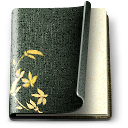The history of Onigiri
- Published 2010.7.13
The history of Onigiri

Onigiri was originally a way of taking care of left-over cooked rice and was easy to carry wherever.
In December of 1987, a carbonized clump of rice was found at the Chanobatake ruins (Ishikawa prefecture), said to be as old as the Yayoi period. Back then, it looks like instead of boiling and moulding the rice, people grilled rice that had been steamed and wrapped it in bamboo leaves like a ŌĆ£chimaki.ŌĆØ
Onigiri today is said to have come from the Heian periodŌĆÖs ŌĆ£tonjiki,ŌĆØ a large elliptical shaped rice ball made from glutinous rice.
The end of the Kamakura period saw the usage of non-glutinous rice when making onigiri. Typically, onigiri is wrapped in nori (seaweed), but this did not come about until the late 16th century. Nutritious and non-sticky, this type of onigiri saw the beginning of a relationship between nori and rice.
